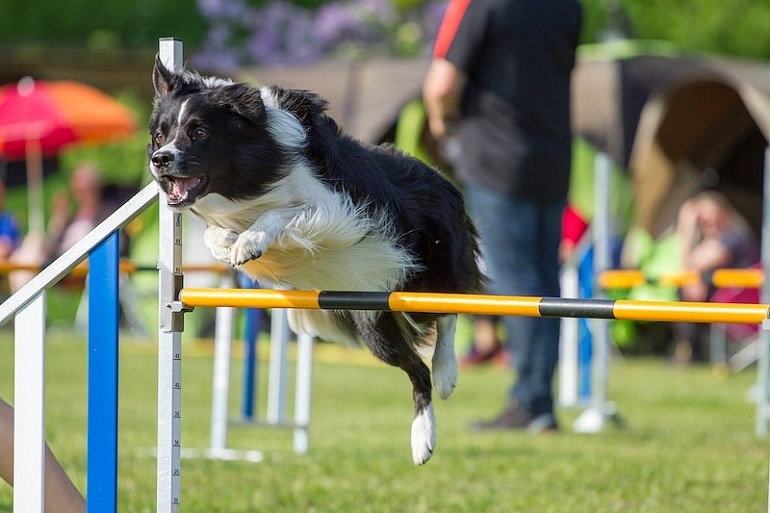Welcome to the world of pet training schedules! As pet owners, we all want our furry friends to be well-behaved and obedient. But, let’s face it, training a pet can be a daunting task. From figuring out the right training techniques to finding the time to devote to training, it can all seem overwhelming. That’s where pet training schedules come in. In this article, we’ll explore the ins and outs of pet training schedules and how they can help you decode the training process for your beloved pet. So, grab a treat and let’s get started on this pawsome journey!
1. Unleashing the Secrets of Pet Training Schedules
Pet training schedules are a crucial aspect of pet ownership that can help you establish a routine for your furry friend. A well-planned training schedule can help you teach your pet new tricks, reinforce good behavior, and correct bad habits. Here are some tips to help you unleash the secrets of pet training schedules:
– Start with the basics: Before you can teach your pet advanced tricks, you need to establish a foundation of basic commands such as sit, stay, and come. These commands will form the basis of your training schedule and help you build a strong bond with your pet. Use positive reinforcement techniques such as treats and praise to encourage good behavior and make training sessions fun for your pet.
– Be consistent: Consistency is key when it comes to pet training schedules. Set aside a specific time each day for training sessions and stick to it. This will help your pet understand what is expected of them and make it easier for them to learn new commands. Consistency also means using the same commands and techniques each time you train your pet, so they become familiar with them.
In conclusion, pet training schedules are an essential part of pet ownership that can help you establish a strong bond with your furry friend. By starting with the basics, being consistent, and using positive reinforcement techniques, you can unleash the secrets of pet training schedules and help your pet become a well-behaved and happy member of your family.
2. From Sit to Stay: Understanding the Importance of Consistency in Pet Training
When it comes to pet training, consistency is key. Whether you’re teaching your furry friend basic commands like “sit” and “stay” or more complex behaviors, such as leash walking or crate training, it’s important to establish a consistent routine and stick to it. Here are a few reasons why:
- Builds trust: Consistency helps your pet understand what’s expected of them, which can help build trust between you and your furry friend. When they know what to expect, they’re less likely to become anxious or stressed, which can lead to unwanted behaviors.
- Makes training more effective: When you’re consistent with your training, your pet is more likely to learn the desired behavior quickly and effectively. This is because they’re able to focus on the task at hand, rather than being distracted by inconsistent cues or rewards.
- Creates a positive environment: Consistency can help create a positive training environment for your pet. When they know what to expect, they’re more likely to feel comfortable and confident, which can lead to better learning outcomes.
Overall, consistency is an essential component of successful pet training. By establishing a consistent routine and sticking to it, you can help build trust with your furry friend, make training more effective, and create a positive environment for learning. So whether you’re teaching your pet basic commands or more complex behaviors, remember to be consistent and patient, and you’ll be well on your way to a well-trained and happy pet.
3. Pawsome Insights: Decoding the Science Behind Effective Pet Training Schedules
Pet training schedules are an essential aspect of pet ownership, and it’s crucial to understand the science behind them to ensure effective training. Here are some pawsome insights that will help you decode the science behind pet training schedules.
– Consistency is key: Consistency is the most crucial aspect of pet training schedules. It’s essential to establish a consistent routine for your pet to follow. This consistency helps your pet understand what is expected of them and what they need to do to receive rewards. It’s also essential to be consistent in the rewards you give your pet. If you reward your pet for a specific behavior one day and don’t reward them for the same behavior the next day, your pet will become confused and may not know what to do to receive rewards. Consistency is the foundation of effective pet training schedules.
– Short and frequent training sessions: Short and frequent training sessions are more effective than long and infrequent sessions. Training sessions should be no longer than 15 minutes and should be conducted two to three times a day. Short training sessions help your pet stay focused and engaged, and they are less likely to become bored or distracted. Frequent training sessions also help your pet retain information better, and they are more likely to remember what they have learned. Short and frequent training sessions are an excellent way to keep your pet motivated and engaged in their training. As pet owners, we all want our furry friends to be happy, healthy, and well-behaved. And while pet training schedules may seem daunting at first, they can actually be a fun and rewarding way to bond with your pet and help them learn new skills. By understanding the basics of pet training schedules and tailoring them to your pet’s individual needs and personality, you can create a customized plan that will set them up for success. So whether you’re teaching your dog to sit, stay, or roll over, remember that with patience, consistency, and a little bit of creativity, anything is possible. Happy training!

